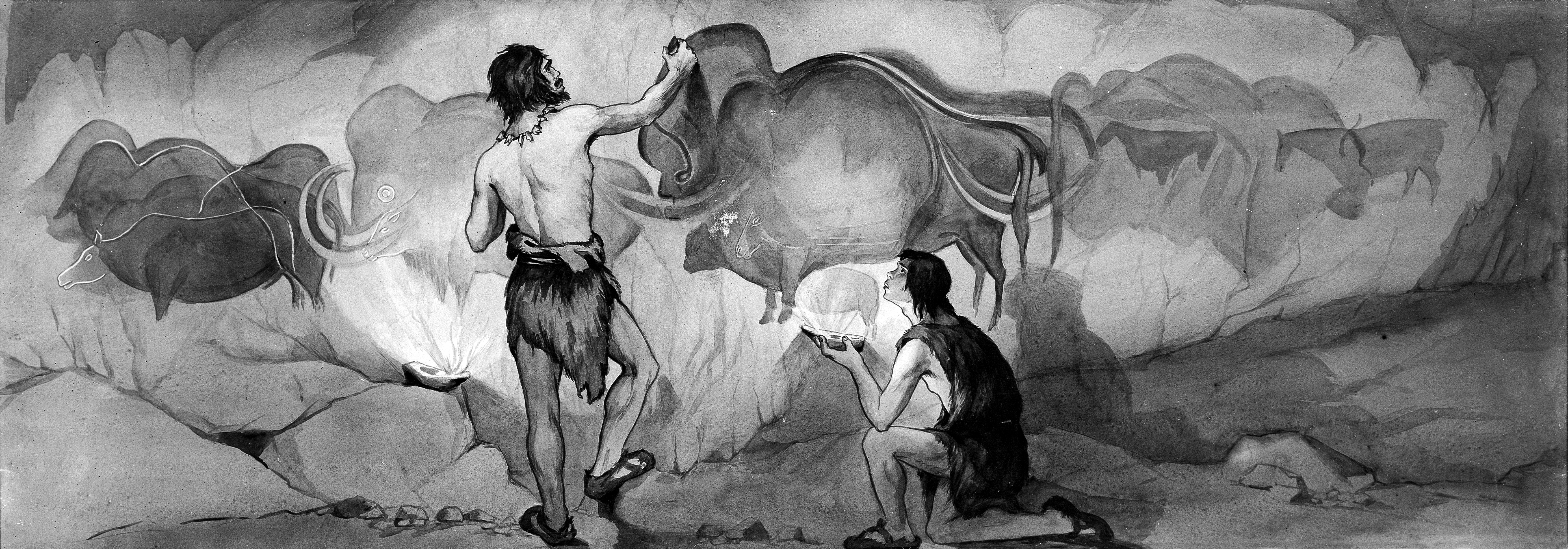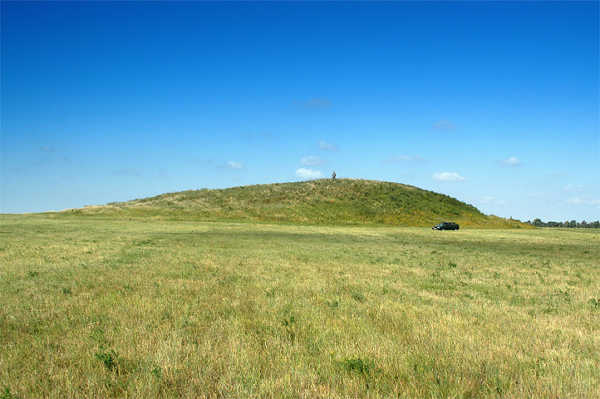|
Pincevent
Pincevent is an archaeological site in the commune of La Grande-Paroisse in France, near the town of Montereau-Fault-Yonne (Seine-et-Marne). It was excavated from 1964 onward by a team of the Centre des Recherches Préhistoriques of the University of Paris, led by André Leroi-Gourhan. Although there is evidence that the area was visited throughout the Late Pleistocene and Holocene, the site has become known for its Magdalenian remains, preserved in clays and silts deposited by the river Seine ) , mouth_location = Le Havre/Honfleur , mouth_coordinates = , mouth_elevation = , progression = , river_system = Seine basin , basin_size = , tributaries_left = Yonne, Loing, Eure, Risle , tributarie .... These remains consist of stone artifacts and bone fragments, as well as numerous hearths, and are considered to point to repeated occupation by reindeer hunters . References * Prehistoric sites in France Pleistocene {{Centre-ge ... [...More Info...] [...Related Items...] OR: [Wikipedia] [Google] [Baidu] |
Magdalenian
The Magdalenian cultures (also Madelenian; French: ''Magdalénien'') are later cultures of the Upper Paleolithic and Mesolithic in western Europe. They date from around 17,000 to 12,000 years ago. It is named after the type site of La Madeleine, a rock shelter located in the Vézère valley, commune of Tursac, in France's Dordogne department. Édouard Lartet and Henry Christy originally termed the period ''L'âge du renne'' (the Age of the Reindeer). They conducted the first systematic excavations of the type site, publishing in 1875. The Magdalenian epoch is associated with reindeer hunters, although Magdalenian sites contain extensive evidence for the hunting of red deer, horses, and other large mammals present in Europe toward the end of the last glacial period. The culture was geographically widespread, and later Magdalenian sites stretched from Portugal in the west to Poland in the east, and as far north as France, the Channel Islands, England, and Wales. It is the th ... [...More Info...] [...Related Items...] OR: [Wikipedia] [Google] [Baidu] |
Archaeology
Archaeology or archeology is the scientific study of human activity through the recovery and analysis of material culture. The archaeological record consists of Artifact (archaeology), artifacts, architecture, biofact (archaeology), biofacts or ecofacts, archaeological site, sites, and cultural landscapes. Archaeology can be considered both a social science and a branch of the humanities. It is usually considered an independent academic discipline, but may also be classified as part of anthropology (in North America – the four-field approach), history or geography. Archaeologists study human prehistory and history, from the development of the first stone tools at Lomekwi in East Africa 3.3 million years ago up until recent decades. Archaeology is distinct from palaeontology, which is the study of fossil remains. Archaeology is particularly important for learning about prehistoric societies, for which, by definition, there are no written records. Prehistory includes ove ... [...More Info...] [...Related Items...] OR: [Wikipedia] [Google] [Baidu] |
Archaeological Site
An archaeological site is a place (or group of physical sites) in which evidence of past activity is preserved (either prehistoric or historic or contemporary), and which has been, or may be, investigated using the discipline of archaeology and represents a part of the archaeological record. Sites may range from those with few or no remains visible above ground, to buildings and other structures still in use. Beyond this, the definition and geographical extent of a "site" can vary widely, depending on the period studied and the theoretical approach of the archaeologist. Geographical extent It is almost invariably difficult to delimit a site. It is sometimes taken to indicate a settlement of some sort although the archaeologist must also define the limits of human activity around the settlement. Any episode of deposition such as a hoard or burial can form a site as well. Development-led archaeology undertaken as cultural resources management has the disadvantage (or the be ... [...More Info...] [...Related Items...] OR: [Wikipedia] [Google] [Baidu] |
La Grande-Paroisse
La Grande-Paroisse (, literally ''The Great Parish'') is a commune in the Seine-et-Marne department in the Île-de-France region in north-central France. Demographics Inhabitants are called ''Grands-Paroissiens''. See also * Communes of the Seine-et-Marne department The following is a list of the 507 communes of the Seine-et-Marne department of France. The communes cooperate in the following intercommunalities (as of 2020):1999 Land Use, from IAURIF (Institute for Urban Planning and Development of the Paris-Île-de-France région)< ... [...More Info...] [...Related Items...] OR: [Wikipedia] [Google] [Baidu] |
France
France (), officially the French Republic ( ), is a country primarily located in Western Europe. It also comprises of overseas regions and territories in the Americas and the Atlantic, Pacific and Indian Oceans. Its metropolitan area extends from the Rhine to the Atlantic Ocean and from the Mediterranean Sea to the English Channel and the North Sea; overseas territories include French Guiana in South America, Saint Pierre and Miquelon in the North Atlantic, the French West Indies, and many islands in Oceania and the Indian Ocean. Due to its several coastal territories, France has the largest exclusive economic zone in the world. France borders Belgium, Luxembourg, Germany, Switzerland, Monaco, Italy, Andorra, and Spain in continental Europe, as well as the Netherlands, Suriname, and Brazil in the Americas via its overseas territories in French Guiana and Saint Martin. Its eighteen integral regions (five of which are overseas) span a combined area of ... [...More Info...] [...Related Items...] OR: [Wikipedia] [Google] [Baidu] |
Montereau-Fault-Yonne
Montereau-Fault-Yonne (), or simply Montereau, is a commune in the Seine-et-Marne department in the Île-de-France region in north-central France. Geography Montereau-Fault-Yonne is situated at the confluence of the rivers Yonne and Seine, 70 km southeast of Paris. The A5 autoroute (Paris–Troyes–Chaumont) passes northeast of the town. Montereau station has rail connections to Laroche-Migennes, Melun and Paris. Name The city takes its name from its geographical position on the confluence of the Yonne and the Seine rivers. ', also spelled ' comes from the verb ' ("to fail") in its old meaning ''to fall''. Montereau is where the Yonne falls into the Seine. Sights The town is split in three by the rivers, ' situated on the southern shore and ''Surville'' on the hill to the north. The old town centre is located in ' while ''Surville'' is an assembly of high rise buildings, erected after World War II, and is in many ways a typical ' in the Île-de-France. Some of these h ... [...More Info...] [...Related Items...] OR: [Wikipedia] [Google] [Baidu] |
Seine-et-Marne
Seine-et-Marne () is a department in the Île-de-France region in Northern France. Named after the rivers Seine and Marne, it is the region's largest department with an area of 5,915 square kilometres (2,284 square miles); it roughly covers its eastern half. In 2019, it had a population of 1,421,197.Populations légales 2019: 77 Seine-et-Marne INSEE Its prefecture is Melun, although both Meaux and Chelles have larger popul ... [...More Info...] [...Related Items...] OR: [Wikipedia] [Google] [Baidu] |
Centre Des Recherches Préhistoriques
Center or centre may refer to: Mathematics *Center (geometry), the middle of an object * Center (algebra), used in various contexts ** Center (group theory) ** Center (ring theory) * Graph center, the set of all vertices of minimum eccentricity Places United States * Centre, Alabama * Center, Colorado * Center, Georgia * Center, Indiana * Center, Jay County, Indiana * Center, Warrick County, Indiana * Center, Kentucky * Center, Missouri * Center, Nebraska * Center, North Dakota * Centre County, Pennsylvania * Center, Portland, Oregon * Center, Texas * Center, Washington * Center, Outagamie County, Wisconsin * Center, Rock County, Wisconsin ** Center (community), Wisconsin * Center Township (other) * Centre Township (other) * Centre Avenue (other) * Center Hill (other) Other countries * Centre region, Hainaut, Belgium * Centre Region, Burkina Faso * Centre Region (Cameroon) * Centre-Val de Loire, formerly Centre, France * Centre ( ... [...More Info...] [...Related Items...] OR: [Wikipedia] [Google] [Baidu] |
André Leroi-Gourhan
André Leroi-Gourhan (; ; 25 August 1911 – 19 February 1986) was a French archaeologist, paleontologist, paleoanthropologist, and anthropologist with an interest in technology and aesthetics and a penchant for philosophical reflection. Biography Leroi-Gourhan completed his doctorate on the archaeology of the North Pacific under the supervision of Marcel Mauss. Beginning in 1933 he held various positions at museums around the world, including the British Museum and the Musée de l'Homme, as well as in Japan. Between 1940 and 1944 he worked at the Musée Guimet. In 1944 he was sent to the Château de Valençay to take care of works evacuated from the Louvre, including the Venus de Milo and the Winged Victory of Samothrace. He also participated in the French resistance, for which he received the Croix de Guerre, the Médaille de la Résistance and the Légion d'honneur. In 1956 he succeeded Marcel Griaule at the Sorbonne, and from 1969 until 1982 he was a professor at ... [...More Info...] [...Related Items...] OR: [Wikipedia] [Google] [Baidu] |
Late Pleistocene
The Late Pleistocene is an unofficial age in the international geologic timescale in chronostratigraphy, also known as Upper Pleistocene from a stratigraphic perspective. It is intended to be the fourth division of the Pleistocene Epoch within the ongoing Quaternary Period. It is currently defined as the time between c. 129,000 and c. 11,700 years ago. The Late Pleistocene equates to the proposed Tarantian Age of the geologic time scale, preceded by the officially ratified Chibanian (formerly known as Middle Pleistocene) and succeeded by the officially ratified Greenlandian. The estimated beginning of the Tarantian is the start of the Eemian interglacial period ( Marine Isotope Stage 5). It is held to end with the termination of the Younger Dryas, some 11,700 years ago when the Holocene Epoch began. The term Upper Pleistocene is currently in use as a provisional or "quasi-formal" designation by the International Union of Geological Sciences (IUGS). Although the three olde ... [...More Info...] [...Related Items...] OR: [Wikipedia] [Google] [Baidu] |
Holocene
The Holocene ( ) is the current geological epoch. It began approximately 11,650 cal years Before Present (), after the Last Glacial Period, which concluded with the Holocene glacial retreat. The Holocene and the preceding Pleistocene together form the Quaternary period. The Holocene has been identified with the current warm period, known as MIS 1. It is considered by some to be an interglacial period within the Pleistocene Epoch, called the Flandrian interglacial.Oxford University Press – Why Geography Matters: More Than Ever (book) – "Holocene Humanity" section https://books.google.com/books?id=7P0_sWIcBNsC The Holocene corresponds with the rapid proliferation, growth and impacts of the human species worldwide, including all of its written history, technological revolutions, development of major civilizations, and overall significant transition towards urban living in the present. The human impact on modern-era Earth and its ecosystems may be considered of global ... [...More Info...] [...Related Items...] OR: [Wikipedia] [Google] [Baidu] |
Seine
The Seine ( , ) is a river in northern France. Its drainage basin is in the Paris Basin (a geological relative lowland) covering most of northern France. It rises at Source-Seine, northwest of Dijon in northeastern France in the Langres plateau, flowing through Paris and into the English Channel at Le Havre (and Honfleur on the left bank). It is navigable by ocean-going vessels as far as Rouen, from the sea. Over 60 percent of its length, as far as Burgundy, is negotiable by large barges and most tour boats, and nearly its whole length is available for recreational boating; excursion boats offer sightseeing tours of the river banks in the capital city, Paris. There are 37 bridges in Paris across the Seine (the most famous of which are the Pont Alexandre III and the Pont Neuf) and dozens more outside the city. A notable bridge, which is also the last along the course of the river, is the Pont de Normandie, the ninth longest cable-stayed bridge in the world, wh ... [...More Info...] [...Related Items...] OR: [Wikipedia] [Google] [Baidu] |

.jpg)




